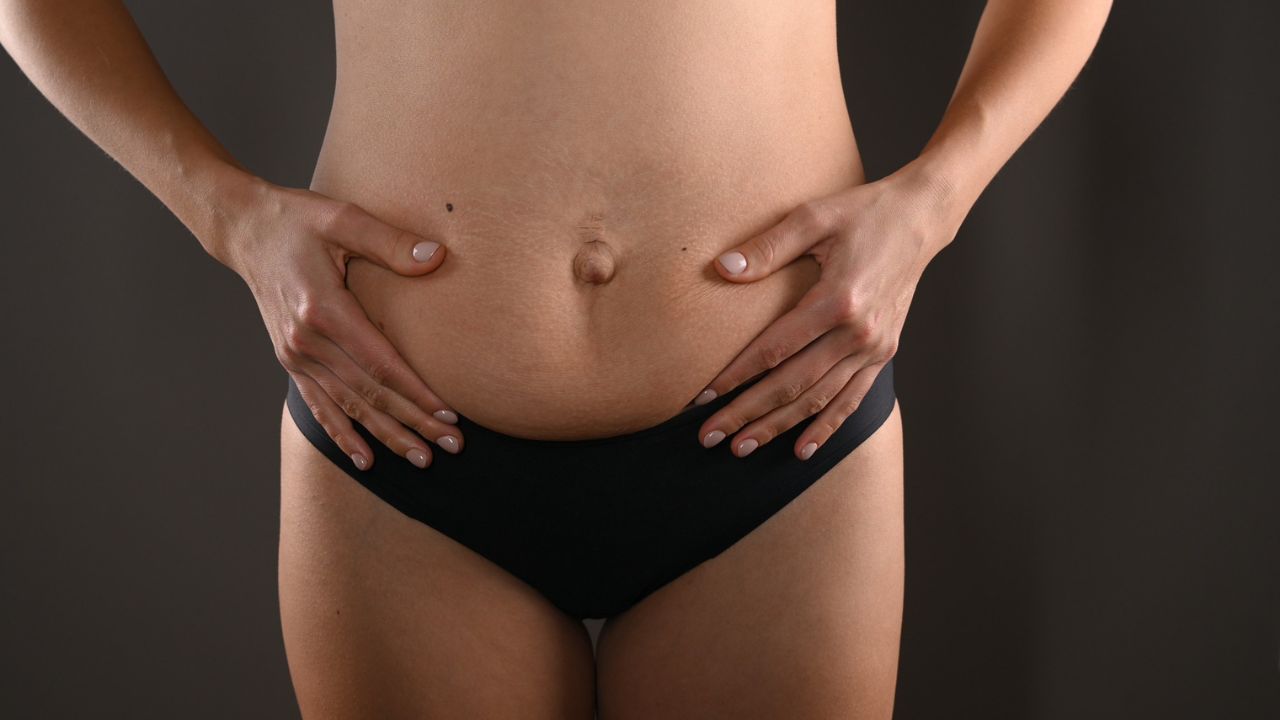Most people think that diastasis looks like this…

When you think about Diastasis Recti (DR), most people think that it either can’t be seen from the outside, that it can only be detected if you try to put your fingers in between your abs, or that if you can see it from the outside that it would look like the first picture above.
But there are actually some pretty common tell tale signs just from looking at a person's stomach (even with clothes on) that they might have a DR.
The thing with diastasis recti is that the two “six pack” muscles are no longer being held tightly together by connective tissue, causing essentially a “collapse” of the abdominal wall and causing it to fall forward. If the muscles are still loose, the connective tissue has nothing firm to hold onto. And if the connective tissue has nothing firm to hold onto and is therefore still loose, then the skin has nothing firm to hold onto either. A domino effect. Because of this, a very common tell tale sign that there might be a DR present, is a sagging belly. Especially if this “excess weight” is disproportionate to the rest of the body.
Look at the two pictures below. Do you notice the hollow trough-like shape below the belly button? That’s a diastasis.


If you can imagine one of those old English brick houses where the foundation has become compromised over time, and the walls have started to bow outwards, it’s very similar to what happens to the body when the foundation becomes damaged or weakened. The abdominal wall starts to bow forwards and is commonly known as the ‘mommy-tummy’ or even the ‘dad-belly’. The foundation being the pelvic floor.
Now look at the picture of the house below 👇🏻. Do you notice how the side wall is sagging? This has happened because the foundation of the house has been compromised. And it’s a great analogy for what happens to the belly when the foundation (pelvic floor) becomes compromised.

Despite popular opinion, fixing a DR requires a full body approach - not just pelvic floor and core restoration. Because if your posture is off, it can put even more forward pressure on your abs, worsening the ab separation. From teaching experience, I find that women with DR very often have weak glutes as well. Weak glutes throw off pelvic alignment, and we need pelvic stability for a strong core. The other posture imbalance I see a lot with DR is very tight shoulders. If the shoulders are tight, it causes the rib cage to flare out when you are laying on your back. If you’ve been following me for a while, you already know the problem with rib flare! But if not, here’s another blog post that explains how rib flare affects the core and causes a bulging stomach.
So to recap:
- if your stomach resembles any of the pictures above and you’ve never checked yourself for DR, do this self test, because if you do in fact have ab separation, doing exercises that involve crunching and leaning back will actually make it worse
- Strengthening your glutes will improve posture and make it easier to strengthen your core
- Opening up the fronts of your shoulders, and strengthening the backs of your shoulders will improve upper back posture, putting less pressure on your core and midline when you do abdominal exercises
My 6 week signature online program the Mama Method teaches you ALL of the techniques required to fix a diastasis from a full body point of view. I’ll teach you how to improve your posture, so that you can be more effective with closing up your diastasis gap, how to restore your pelvic floor (the foundation of your core), and how to incorporate your core into almost every other movement, so that by the end you’ll know how to incorporate these techniques into your running, your spinning, your cross fitting, even carrying your real-life 50lb “kettlebells” easily!
→ If you’re already in the Postpartum Protocol/Mama Method, I want to encourage you to be consistent, because consistency gets results!
→ If you’ve not yet started, I want to inspire you to get going.
If you're ready for change, click here to join the Mama Method revolution.
Questions about the program? Click here and ask away.
Emma xo

